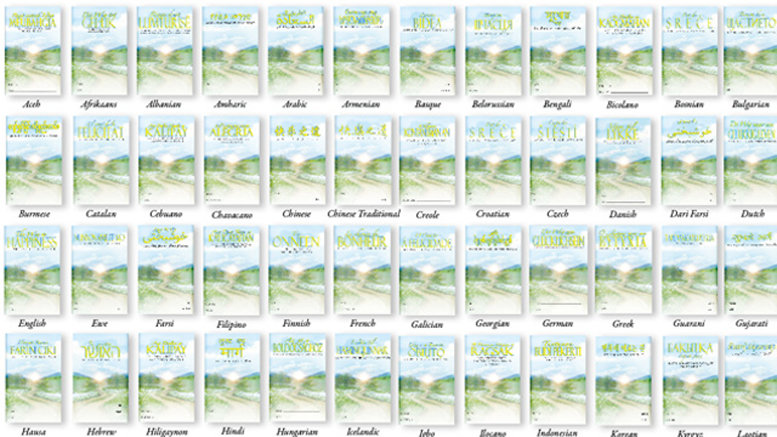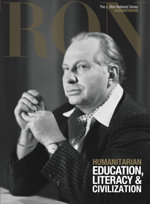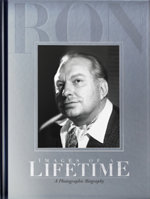The Way to Happiness

Every culture in every age has relied upon a moral code to provide broad guidelines for conduct conducive to social accord and survival. Although much in past moral codes may not seem particularly relevant to this twenty-first century, when originally written they were entirely relevant. They helped ensure the perpetuation of the family, the group and nation. They provided the means by which people upheld the basic tenets of honesty and mutual trust. In short, the moral code supplied the overriding principles by which men could live peaceably, prosperously and in harmony with one another.
By the start of the 1980s, however, as L. Ron Hubbard so rightly observed, the world had become a veritable jungle. The signs were everywhere. “Greed is Good” went a popular aphorism of the day, while obscene fortunes were made through stock manipulation and fraud. If art and entertainment were any reflection, then the 1980s marked the beginning of a genuinely frightening era of casual and horrifically graphic violence. Then, too, who can forget what the 1980s signaled in terms of inner-city violence, where twelve- and thirteen-year-old children murdered one another with absolutely no compunction whatsoever; hence, the chilling resonance of such terms as “drive-by shooting” and “gangbang.”
It was into this morally bereft landscape, then, that L. Ron Hubbard presented his The Way to Happiness in 1981. Typically, his approach was both historically and culturally broad. Just as all ancient cultures required a moral code to help sustain their fabric, he declared, so too did our own; for old values had been broken yet not replaced by new, while religiously based codes of ages past demanded a faith many could no longer muster. Nor, he concluded, were theories that children would naturally assume a moral stance any more reliable. Thus he wrote The Way to Happiness.

The three editions of L. Ron Hubbard’s The Way to Happiness: hardback, booklet and a book on film
The work stands alone as the only moral code aimed at a pragmatic, high-tech and highly cynical society. The first work of its kind based wholly on common sense, it is entirely embracive. It carries no other appeal than to the good sense of readers and is designed to help them actually apply its precepts in their daily lives. Beneath the many differences of national, political, racial, religious or other hue, each of us as individuals must make our way through life. Such a way, The Way to Happiness teaches, can be made better if the precepts it presents are known and followed.
Life in an immoral society can be more than simply difficult when basic human values are held up to ridicule. To counter such declining moral trends, Mr. Hubbard’s The Way to Happiness contains 21 separate precepts—each constituting a rule for living relevant to anyone in our global village. Indeed, more than one hundred million copies of the booklet in better than two hundred nations and a hundred languages are presently in circulation, with no end in sight. The work has further inspired scores of United States Congressional recognitions and many more heartfelt endorsements by police, civic leaders, businessmen and educators. It forms the basis of the highly successful “Set a Good Example” and “Get Drugs Off School Grounds” campaigns, involving over twelve million American students, parents and teachers in upwards of twelve thousand elementary, junior high and high schools. These campaigns, in turn, additionally earned endorsements from some 90 state governors and state legislators, as well as directors of drug abuse programs and departments of education in hundreds of American communities.
“Happiness lies in engaging in worthwhile activities. But there is only one person who for certain can tell what will make one happy—oneself.”
The praise is well deserved. One Ohio school, prior to participation in a Way to Happiness program, suffered both routine violence and drug abuse while students tested well below acceptable reading levels. After a two-year Way to Happiness drive, those trends dramatically reversed and the school was declared entirely drug-free while reading levels soared well above national averages.
In a notoriously violent South Central Los Angeles results from The Way to Happiness distribution were likewise nothing short of miraculous. Indeed, after hard-core gang members read (or were read to) The Way to Happiness, they voluntarily removed graffiti from 130 neighborhood buildings, while voluntarily passing out hundreds of copies of the booklet to local residents. The booklet also inspired food drives and cleanup efforts in the wake of the 1992 Los Angeles riots and the same again in the 1994 Los Angeles earthquake. As a community leader from the Parents of Watts group reported: “We’ve been giving out this book now for about two or three months. Nothing different has come into the community except this particular book—and we do see a change and we have to relate it to The Way to Happiness.”
| ||||||||||||||||||||||
|
Internationally, Mr. Hubbard’s The Way to Happiness similarly proves a significant catalyst for positive change. In the South African township of Soweto, for example, a campaign based on the precept “Safeguard and Improve Your Environment” garnered support from the largest national food chain and labor unions, after booklet distribution dramatically improved community relations. As one resident explained: “The rate of violence has decreased so much that we now know how to sit down together and share our views. This relationship comes from your wonderful booklets.” Still another campaign in the South African city of Pietermaritzburg proved so successful in easing racial tensions, the South African police requested 114,000 copies of The Way to Happiness booklet—one for every officer in the nation. Likewise adopting the booklet in whole cloth are Anglican and Pentecostal Churches across South Africa’s Gauteng Province and the same again across the Eastern Cape.
There is substantially more. Moscow law enforcement officers carry copies of The Way to Happiness prefaced with a statement reading: “This book is recommended to you by the Moscow City Police Department in the hopes that it will help you lead a better and happier life.” The booklet was additionally reprinted in the city’s largest newspaper for the fact it has repeatedly proven a calming influence among restive populations. To cite but two examples: a national proliferation of booklets is now on record for quelling political violence in Thailand, while The Way to Happiness seeded through Congolese rebel factions led to an actual laying down of arms.
For all the above reasons and more, The Way to Happiness comprises a movement unto itself in Colombia. Declaring the root of Colombian violence lay “not in politics, but in the soul of our people,” publishers of El Tiempo reprinted selections of the booklet to calm general unrest. To the same end, Colombian military commanders ordered thirty thousand copies of the booklet distributed to soldiers on narcopolitical firing lines even as a National Coordinator for the Juvenile Police directed distribution through some forty patrol units. Not to be outdone, the Minister of Education further sanctioned the booklet as a supplementary teaching aid for all elementary curriculums. Thereafter, and absolutely date coincident, drug-related murder plummeted to the lowest point in decades.
Today, of course, the popular assault on moral decline is pervasive. It is addressed by virtually every political referendum and inspires any number of articles, books and documentaries. To what degree this shrill cry for a moral resurgence has, in turn, been inspired by Mr. Hubbard’s work is, of course, difficult to say. But with The Way to Happiness, he has clearly charted a course toward greater tolerance, peace and mutual trust.

The Way to Happiness Foundation International in Glendale, California, where global distribution is coordinated across more than two hundred nations to better than one hundred million people





